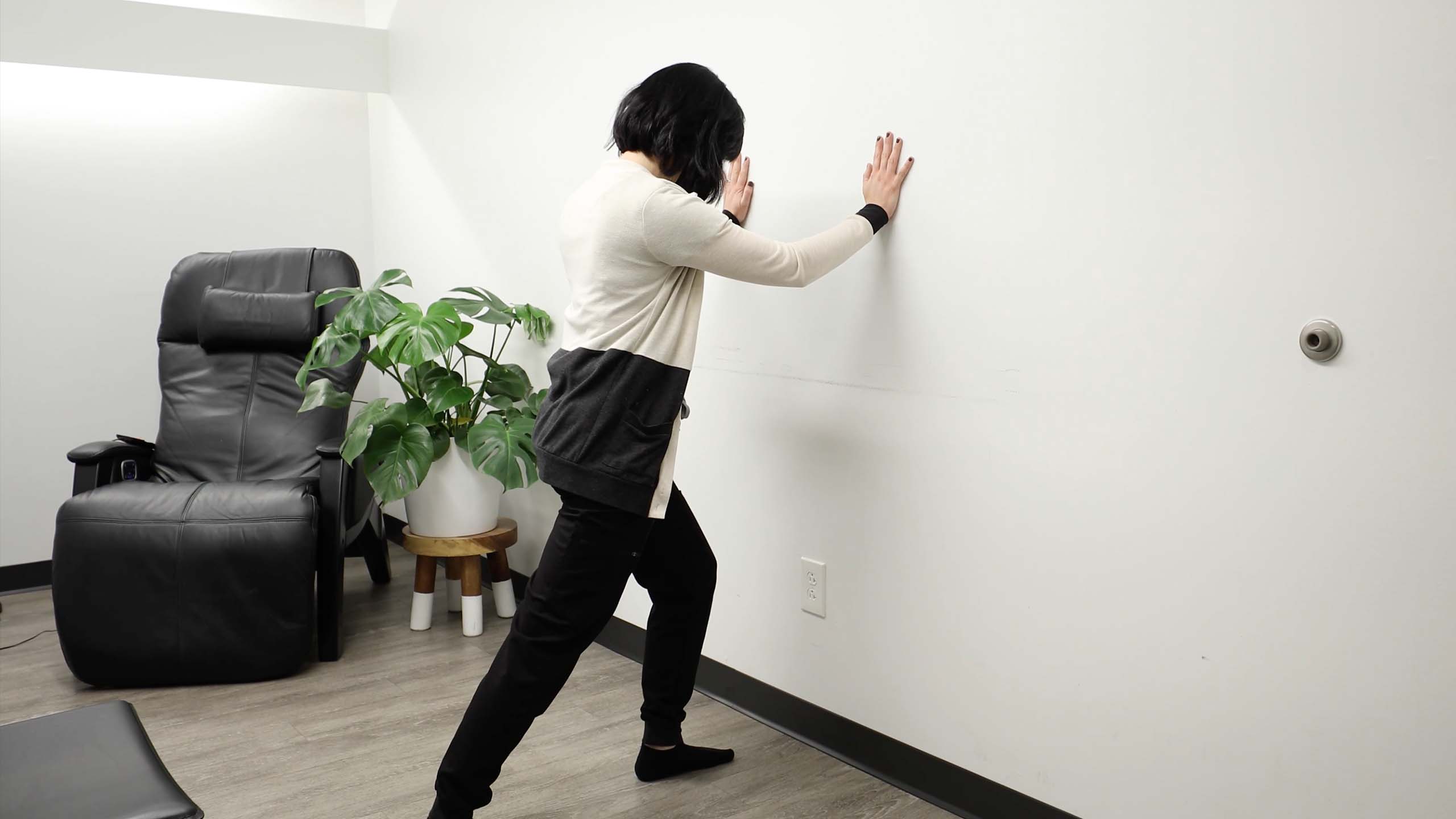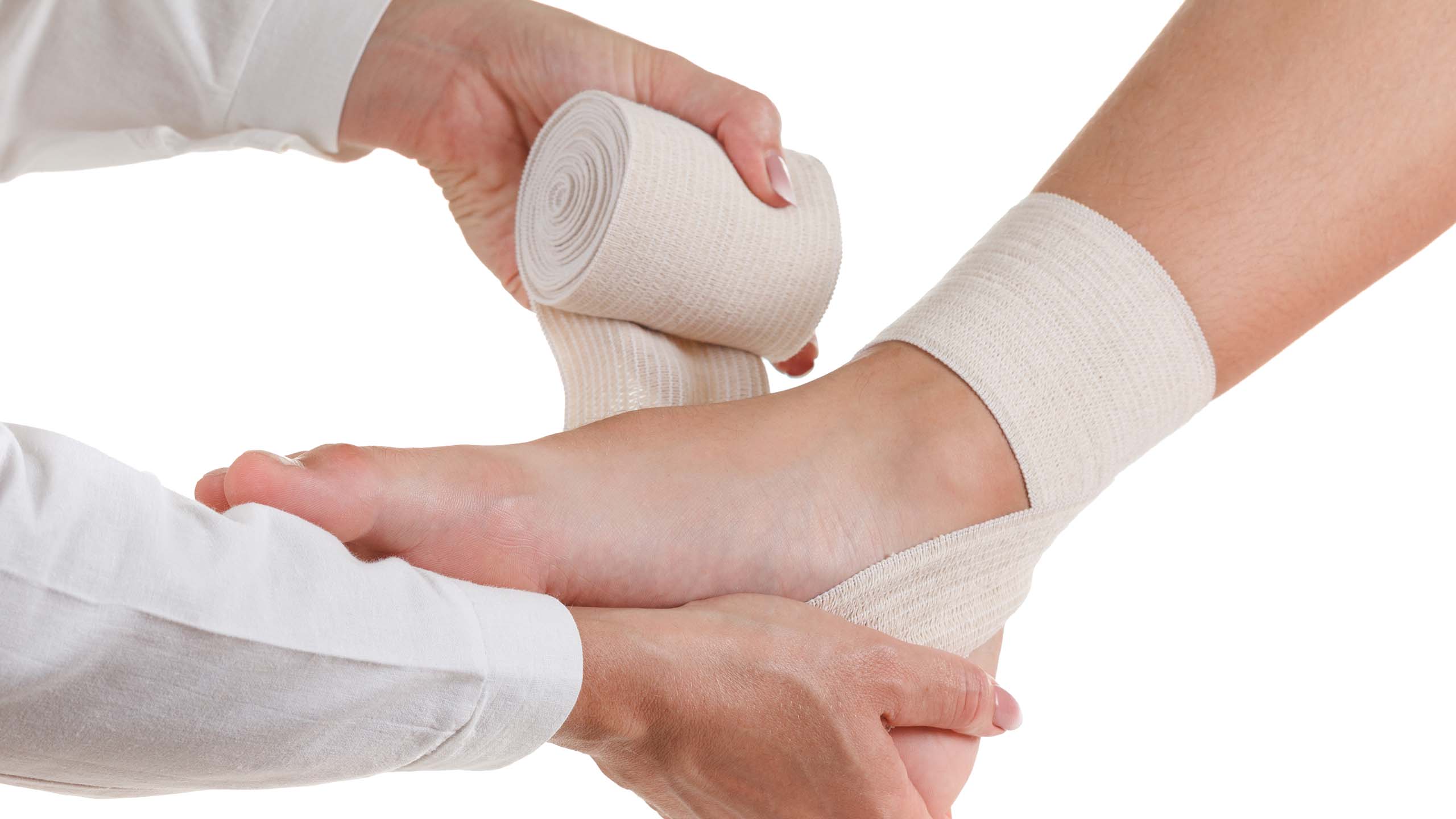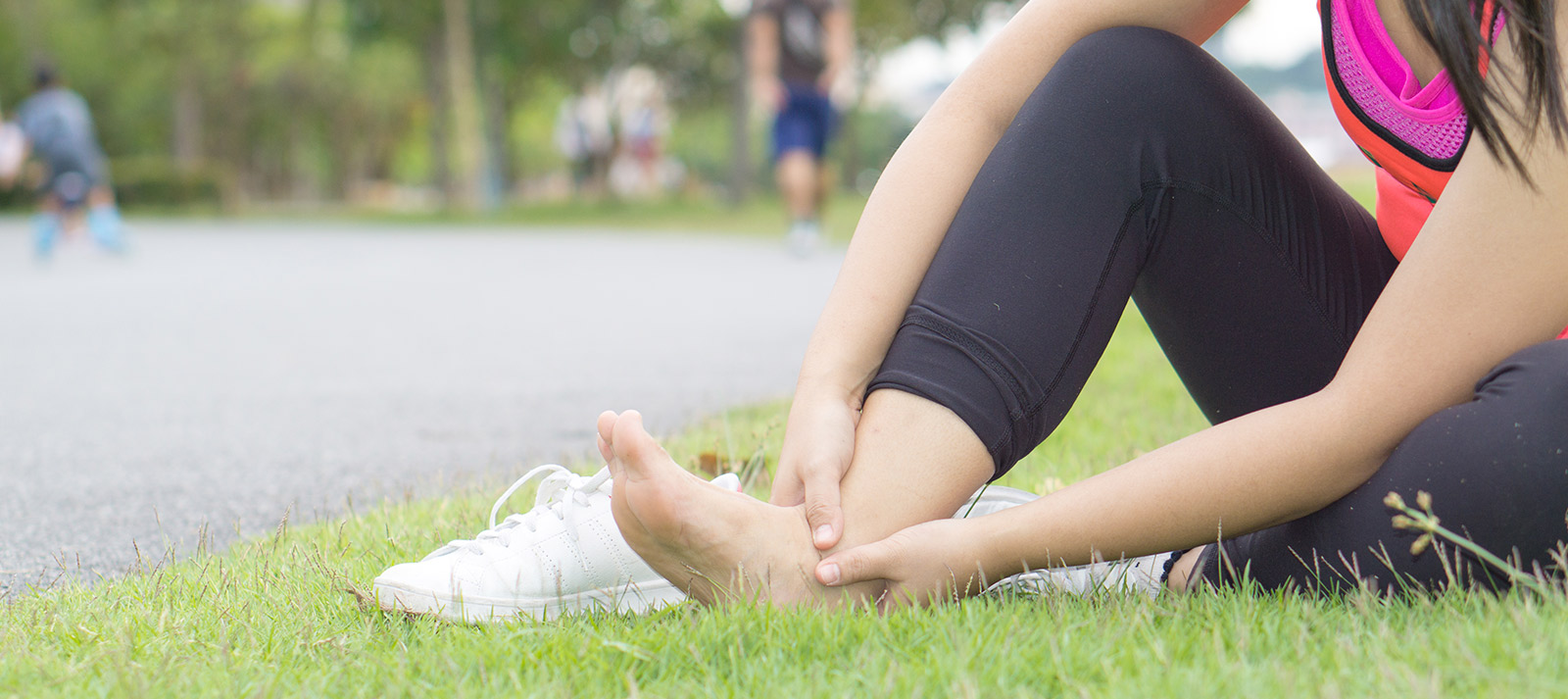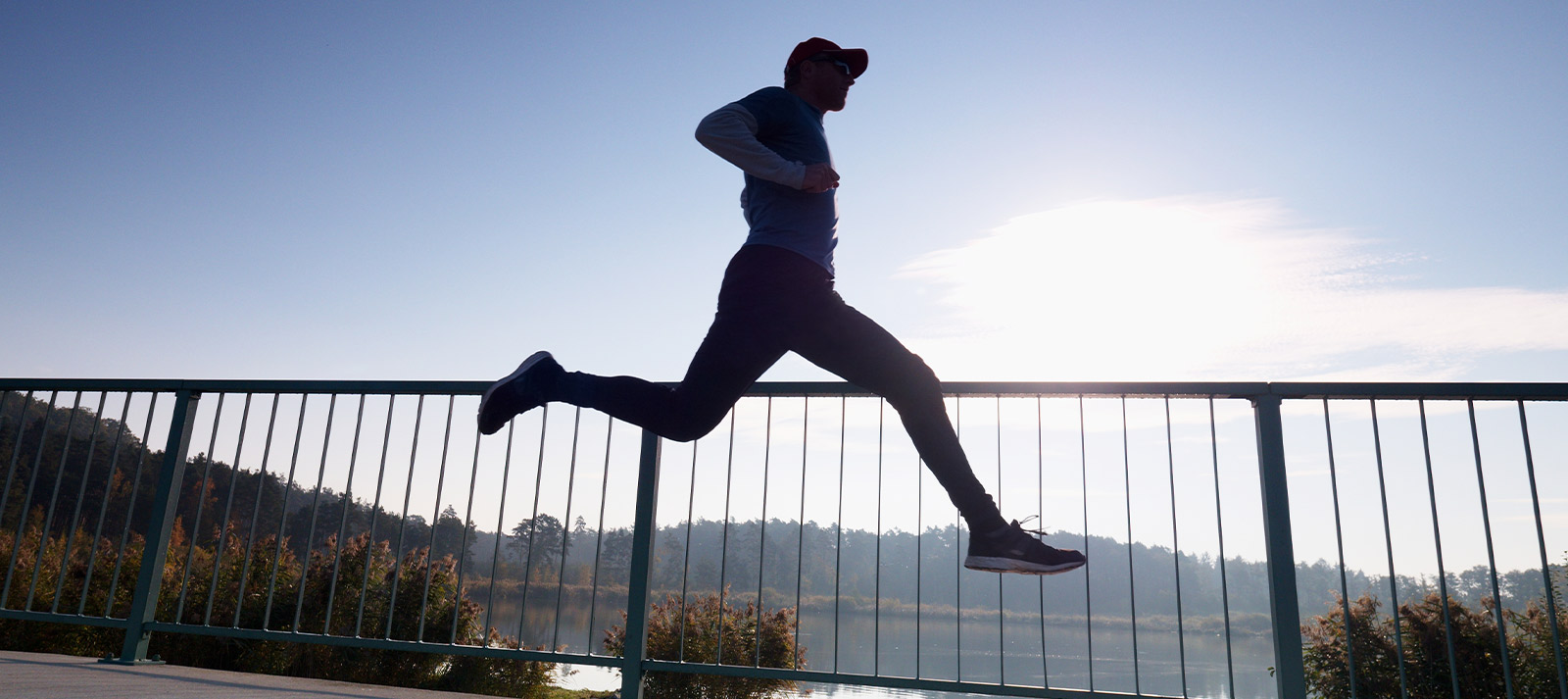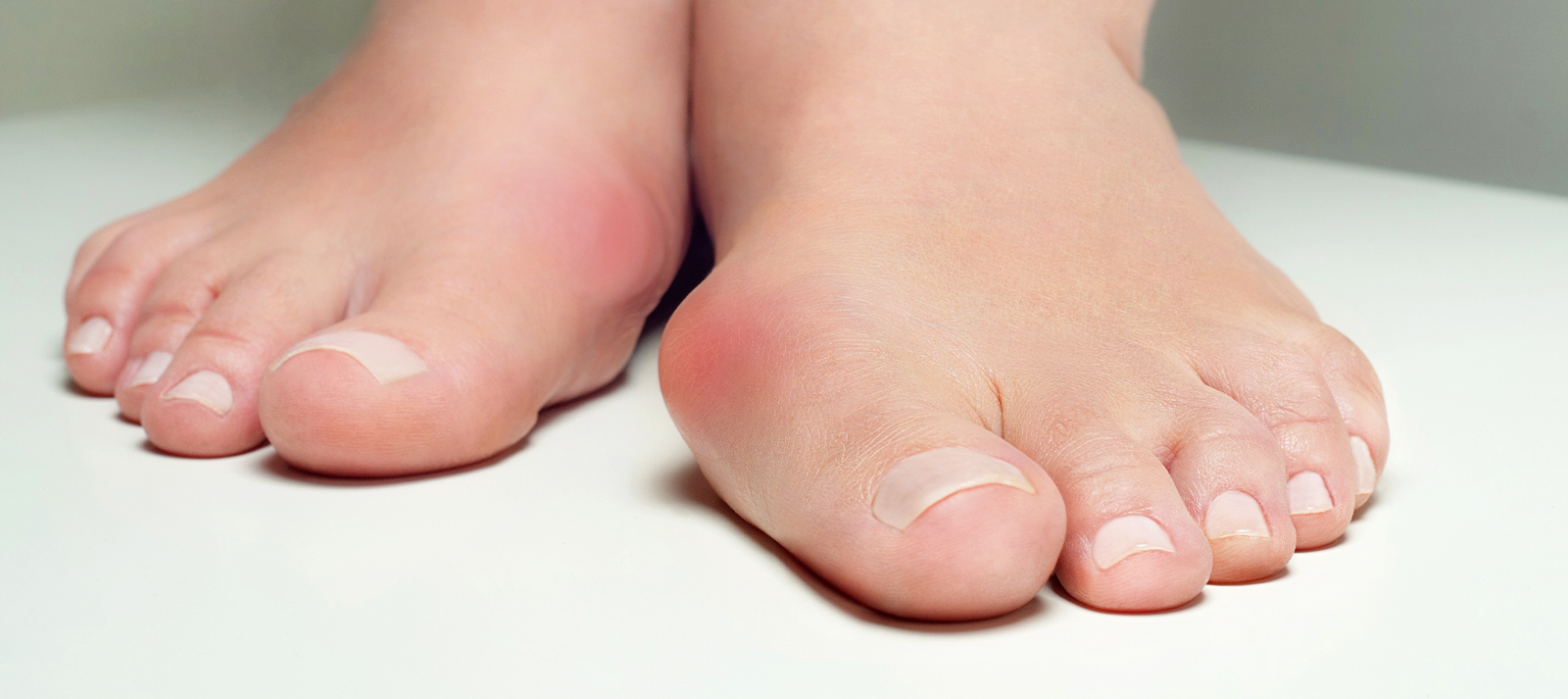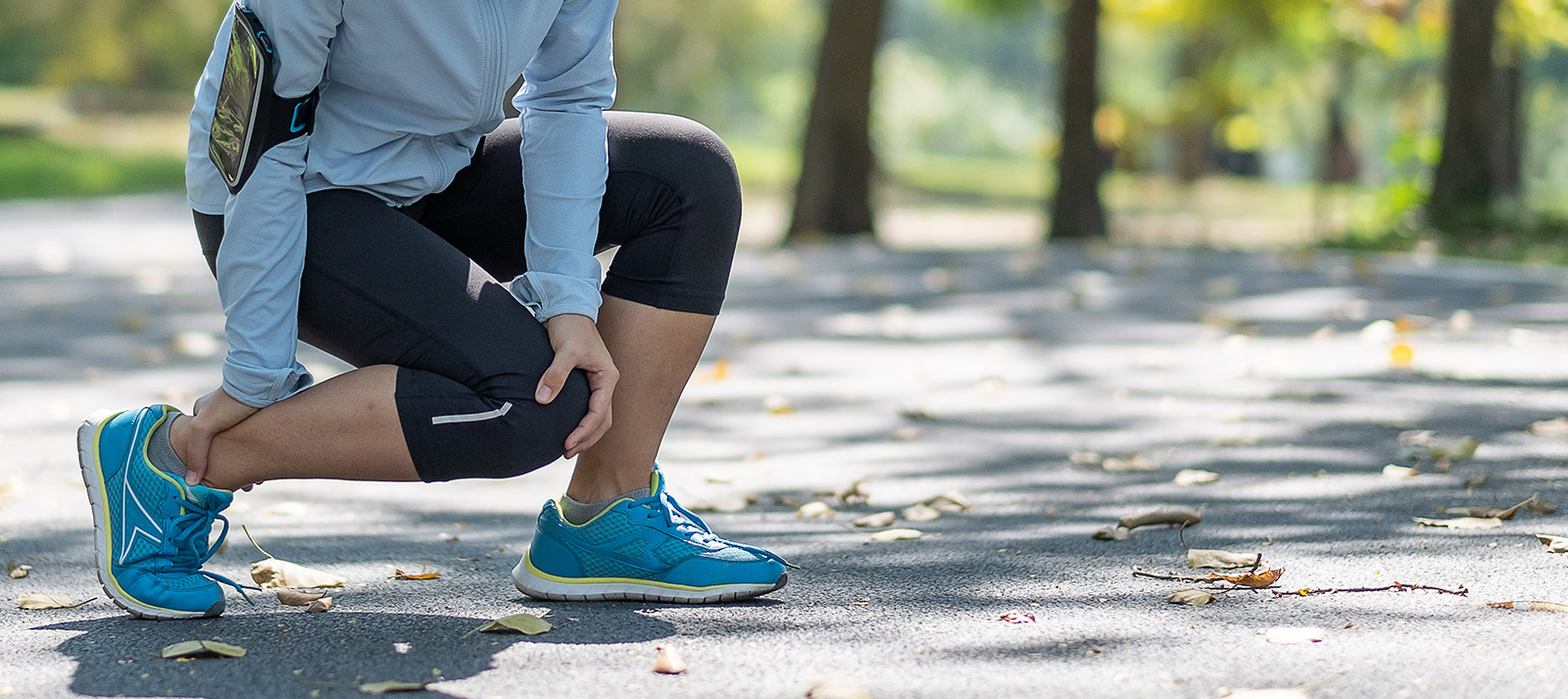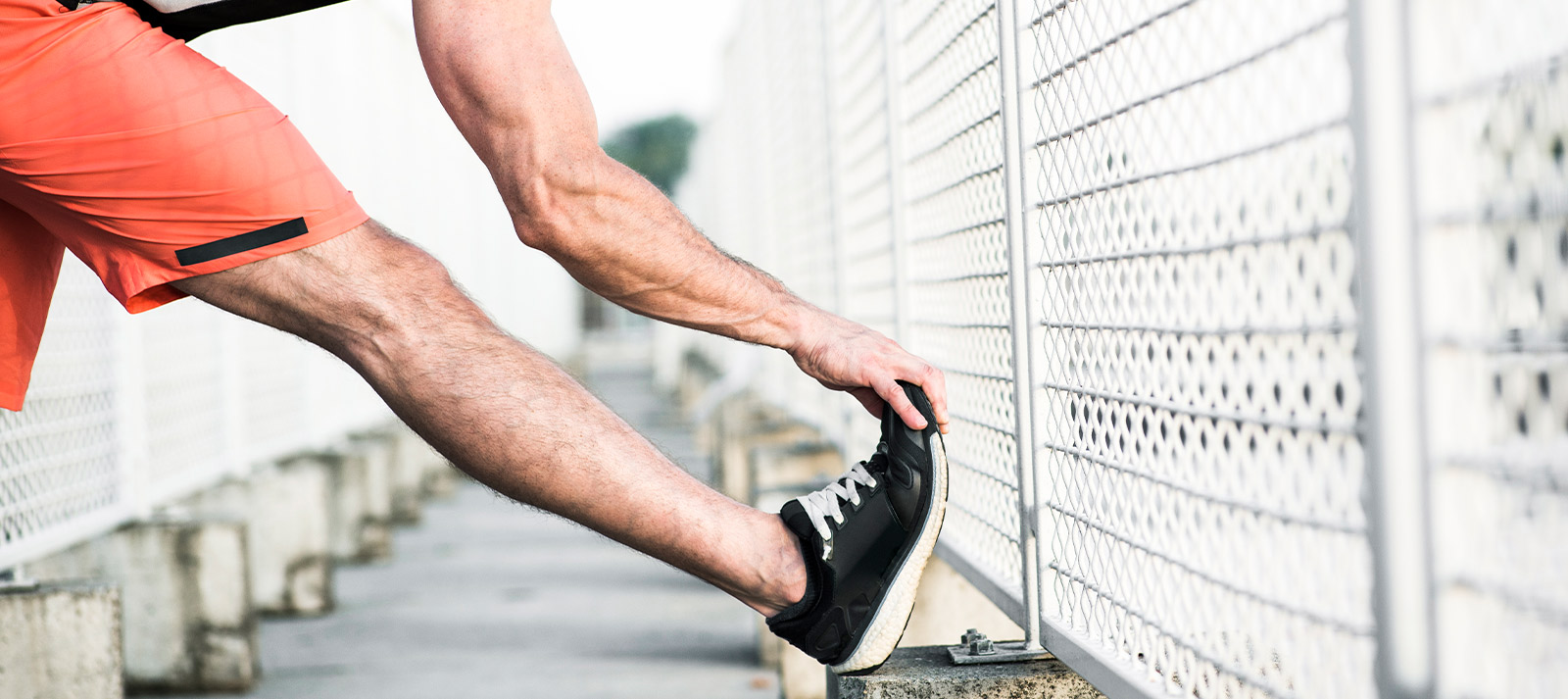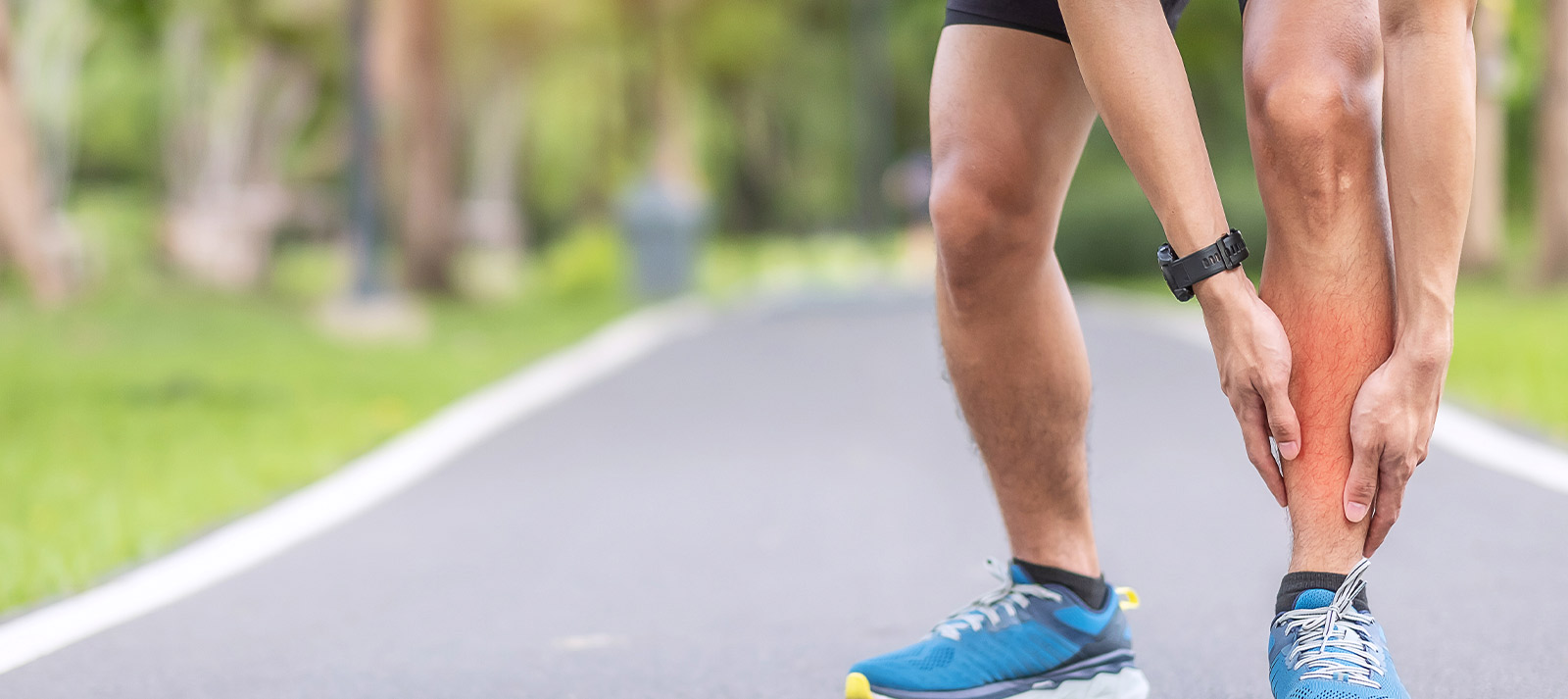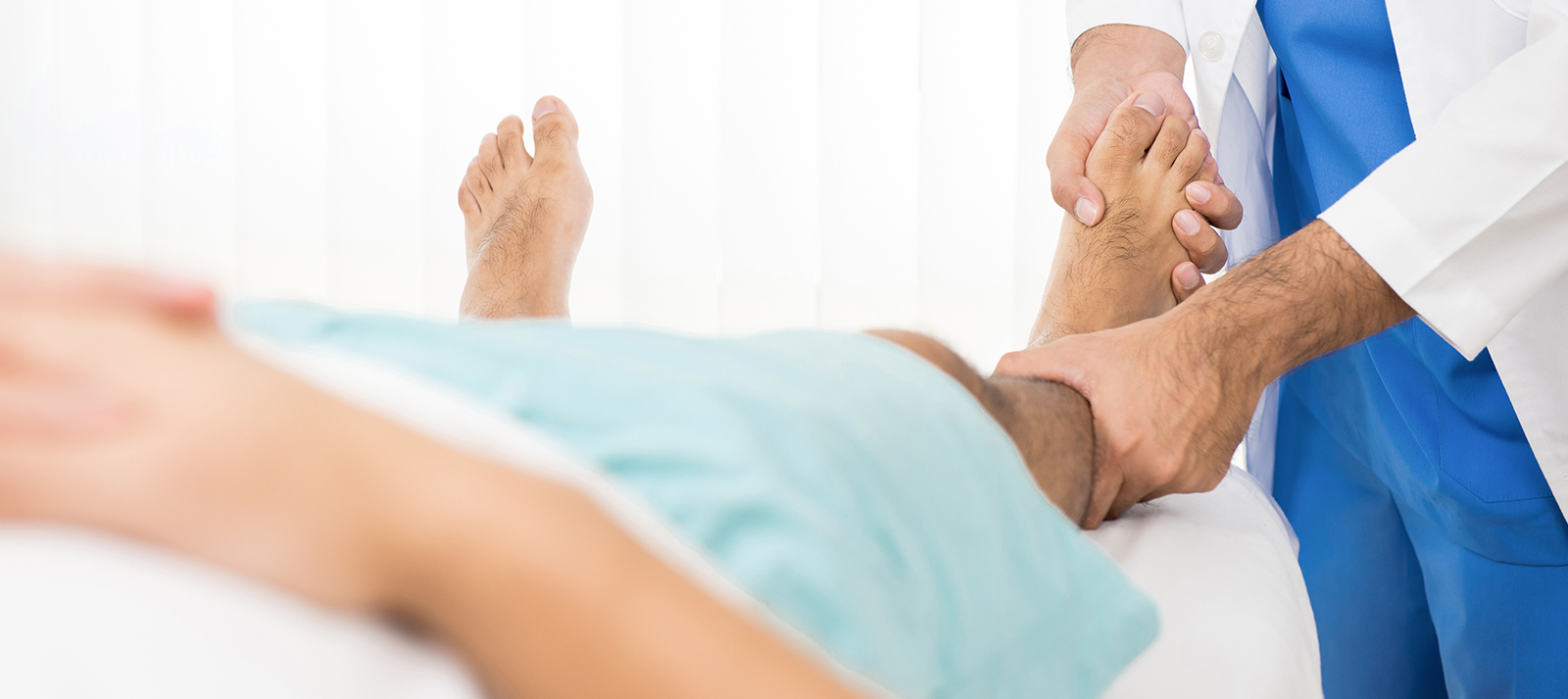Video: Stretches to Prevent Common Running Injuries
Video: Stretches to Prevent Common Running Injuries
Although running is a great way to stay active, many runners will deal with an injury at some point. The repetitive impact of this type of exercise can take a toll on your body, which can result in various injuries.
Let us restore your balance.
Thankfully, Balance Foot & Ankle’s Dr. Hunstman is here to give you some insight into common running injuries and how you can prevent them. In the case that professional intervention is required, our trusted team of podiatrists can help get you back on your feet with a personalized treatment plan that emphasizes a holistic approach to total wellbeing.
How to Wrap an Ankle Sprain
How to Wrap an Ankle Sprain
We know that life is busy for our patients, and this can mean that even when injuries happen, you cannot always make time to see us immediately. But what can be done if you suspect you’ve injured your foot or ankle between the time it occurs and coming in for an appointment? And how can you avoid having the injury become more severe? Today we’ll discuss a common at-home care technique: wrapping an injured foot or ankle.
Why Use a Compression Wrap?
A compression wrap may help to prevent swelling, which can help to alleviate pain in the foot and ankle. It is not a brace and does provide substantial support for the ankle or prevent it from moving, however, it does give the wearer a nice reminder to go about their day in a more careful manner so as not to cause further injury.
Using a Compression Wrap Properly
Instructions
- Roll up the elastic bandage. Position your ankle at about a 90-degree angle. Begin wrapping below your toes, at the pad of your foot. Hold the loose end of the bandage at the side of your foot and wrap around, keeping the fabric taut with light tension.
- After this, wrap around the arch of the foot. Next, wrap the bandage diagonally from the bottom of the toes across the foot’s top and circle it around the ankle. Now bring the bandage diagonally across the top of the foot and under the arch in a figure-eight pattern.
- When you get to the ankle bone, wrap the bandage around the felt piece so it stays in place under the ankle bone. Continue around the ankle and foot in a figure-eight motion, moving toward the heel on the bottom and toward the calf at the top of the eight.
- The wrap should cover the entire foot and end about four inches above the ankle. Most compression wraps are self-fastening or come with clip fasteners. If not, use tape to secure the end. The wrap should be snug but should not cut off circulation to the foot.
Again, this is often a temporary solution and not a recommended therapy to address the issue. If pain or discomfort persists, you should schedule an appointment to be seen in the office at which time your doctor will evaluate and determine a proper course of action to help you back to health.
Our goal is to be sure that you are feeling your best. If that is not the case, please reach out today so that we can determine how best to help you!
Video: Ankle Sprains
Video: Ankle Sprains
Life can be challenging when you have ankle pain. It can slow you down, or even bring you to a halt. It can make day-to-day activities, like grocery shopping or walking, an inconvenience. Find your balance and a convenient, efficient answer to alleviating ankle pain.
Let us restore your balance.
Recovery after an ankle sprain can be a long road. However, our trusted team of podiatrists at Balance Foot & Ankle can help get you back on your feet with a personalized treatment plan that emphasizes a holistic approach to total wellbeing.
Video: Achilles Tendon Strain - Road to Recovery
Video: Achilles Tendon Strain - Road to Recovery
Your Achilles tendon serves as the connection between your calf muscle and the bones in your foot, which means you use it every day, all day long. It is also the thickest and strongest tendon in your entire body, which makes injuries like an Achilles tendon strain so much worse.
Most people injure their Achilles tendon playing sports, especially those that involve running like soccer, basketball, and tennis. It’s also possible to strain this tendon by simply falling or tripping. That makes stretching before any physical activity even more important as these injuries can result in immobilization for months, even ending sports careers.
How do I recover from straining my Achilles tendon?
If you’ve strained your Achilles tendon, the recovery process is gradual, requiring patience and time. Making an appointment with your board-certified podiatrist at Balance Foot & Ankle is an important first step. Your injuries might require rest, ice, anti-inflammatories and immobilization, depending on the severity. Recovery will be closely monitored and standard recovery protocols typically include physical therapy and at-home stretches. In doing so, with proper restoration, you can expect to return to your normal physical activity in about six months.
Here are three tips to make sure your recovery goes as smooth as possible:
- Sleep: Muscles and tissues rejuvenate and repair during sleep. So, getting sufficient rest each night provides your body with time to heal.
- Ice and Elevate: After injuring your Achilles tendon, your ankle may be swollen and sore for the next few days. To reduce swelling and pain, use an ice pack for 10-20 minutes at a time every few hours and elevate your ankle above your heart while sitting or lying down.
- Exercise: Your physical therapy stretching exercises are an important component of your recovery. Follow all of the instructions given by your doctor, and be mindful of your pain levels. Taking it slow and steady is the best path to a healthy recovery.
Let us restore your balance.
Recovery after an Achilles tendon strain can be a long road. However, our trusted team of podiatrists at Balance Foot & Ankle can help get you back on your feet with a personalized treatment plan that emphasizes a holistic approach to total wellbeing.
Explainer: What Is A Bunion And Do I Need To Get Mine Treated?
Explainer: What Is A Bunion And Do I Need To Get Mine Treated?
Source: The Conversation
While most people don’t like the sight of bunions, they’re much more than a cosmetic issue. A bunion can cause pain and impact physical function, as well as affecting general health, mental health and social function. Limitations on what footwear can be comfortably worn due to bunions reduces social activities and physical activities.
Scientifically named hallux valgus, a bunion is an enlargement of the inner portion of the joint at the base of the big toe. The enlargement is due to a misalignment of the big toe joint and, in some cases, there is additional bone growth caused by inflammation. The misalignment causes the big toe to point outward towards the other smaller toes.
What are the symptoms?
Symptoms can include the joint becoming inflamed with redness, tenderness, and pain. This is due to a small fluid-filled sac called the bursa, which is adjacent to the joint, also becoming inflamed. This is called bursitis.
A deeper joint pain may occur in later stages of the deformity if localised arthritis develops. Over time, the deformity will increase, although the symptoms may not increase.
The pain of bunions and the difficulty finding comfortable footwear impacts on people’s ability to exercise, resulting in reduced physical and mental health. There are also effects on self-image, with patients being uncomfortable with others seeing their feet.
Who is affected?
A recent Australian study found a surprising 36% of participants had this condition, with women and older people more likely to be affected.
What are the causes?
There are a few factors that can lead to bunions including a genetic component. They are caused by faulty foot structures such as having flat feet, excessively flexible ligaments, or abnormal bone structures that lead to the development of bunions.
The Framingham Foot Study found bunions and lesser toe deformities are often inherited in white men and women of European descent.
Shoes also play a significant part, including shoes that are too narrow or wearing high heels for prolonged periods, hence women being over-represented.
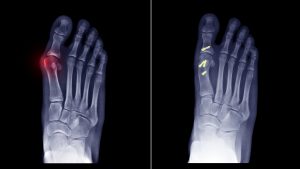
Do bunions need to be treated?
Not all bunions need to be operated on. Conservative treatment is recommended first and then if this doesn’t alleviate the condition (you are unable to walk more than a few blocks and medication and rest don’t reverse the swelling and pain) you may be advised to have surgery.
The severity of the deformity will dictate the extent of the surgical procedures required. There are a number of surgical techniques currently practised.
Bunionectomy is the removal of the inflamed fluid sac from between the skin and bone. Osteotomy is the repositioning of the metatarsal, the big bone in the toe that’s affected. The surgeon may hold the repositioned bone in place with screws, wires, or a metal plate. In severe cases, an artificial joint will be used to replace the existing badly damaged joint. This procedure is called arthrodesis.
Newer minimally invasive surgical techniques are showing positive results for mild to moderate bunions. The advantages to this approach to osteotomy compared to traditional osteotomy are that healing time is minimised and scarring is decreased. The tissues that cross the big toe joint are not damaged in the newer approach, which means there is no joint stiffness after surgery.
If surgical treatment isn’t advised, there are still things you can do to alleviate the condition.
Choice of footwear: your choice of footwear is important. Shoes that are flat, supportive and give you plenty of width for your toes are the best choice. Orthotics may also ease the condition.
Exercises: a podiatrist can recommend specific exercises to treat your symptoms of bunion. These might include going barefoot around the house as this activates the muscles in your big toe joints.
Medication: anti-inflammatory medication may help, and some people receive steroid injections, such as cortisone. These injections reduce the inflammation, and may relieve pain temporarily. Caution is advised as there are many side effects such as infection and bleeding, especially if used frequently and at high doses.
Maintain a healthy weight: this reduces the pressure on your foot joints.
Padding: use of over-the-counter pads can relieve the pressure on your bunions.
What should I do for my bunion?
The best way to find the right treatment for you is to ask your general practitioner or a podiatrist for their advice. The information in this article is general in nature, and your specific case will have to be examined.
Top Home Remedies To Relieve Ankle Pain
Top Home Remedies To Relieve Ankle Pain
Your ankles are the key to running, jumping and just about any physical activity that involves movement. They support your body in unimaginable ways. In fact, your ankles have the ability to carry forces equivalent to several times your body weight.
However, that’s not all your ankles can do. Your ankles bring virtue to movement — empowering vertical and horizontal motion. Simply put, ankles are the reason we can jump up and down and turn left and right.
On average Americans walk 4,000 steps a day. Over time, this may significantly utilize your ankles and cause pain. Ankle pain can certainly slow down or change your lifestyle temporarily, but, in many cases, it isn’t a permanent injury. It may simply require some special at-home attention.
Why am I experiencing ankle pain?
Often a result of an accidental fall or injury during physical activity, anyone can experience ankle pain — regardless of age. The symptoms are typically quite clear — difficulty putting weight on your ankle, swelling, redness or simply general pain originating from your ankle.
Ankle pain can come in a wide variety of imbalances, such as sprains, fractures, arthritis, tendinitis, and more. Most commonly, ankle pain is caused by a sprain, which is an injury to the ligaments connecting to your ankle bones. This is often the result of a twist or movement that overstretches or extends your ligament.
What can I do at home as a remedy for ankle pain?
As soon as you notice ankle pain, or have an injury that strains your ankle, take preventative measures to help alleviate any lasting pain or swelling. That way you can get back on your feet as soon as possible.
To bring balance and remedy your ankle, just remember RICE — Rest, Ice, Compress and Elevate — a simple and established at-home method for ankle pain relief and recovery.
- Rest to protect your ankles and be sure to stop any activity that causes further agitation.
- Ice to reduce pain and swelling, using a cold pack at 10 to 20-minute intervals.
- Compress to decrease swelling, wrapping a bandage around your ankle.
- Elevate to alleviate pain and swelling, lifting your foot and applying an ice pack.
As soon as your ankle’s soreness and pain subside, make sure to stretch daily before attempting to return to normal activities and exercises.
We’re here to help you find your balance
So, when should you visit a podiatrist for your ankle pain?
If the RICE method and over-the-counter pain relievers do not seem to be helping, there may be other solutions that can only be provided by a podiatrist that understands your unique biomechanics. In some cases, custom orthotics can put you on the right path to recovery. However, everyone’s unique feet and ankles require innovative solutions that fit their lifestyle and body. So, it’s best to schedule an appointment directly with a podiatrist for foot and ankle pain relief.
From medical and surgical appointments to aesthetics and wellness, Balance Foot & Ankle’s well-rounded and comprehensive approach to foot and ankle treatment fosters an environment of excellence, hospitality and compassion within a contemporary yet warm setting.
Experience a balanced approach to total wellbeing at a location convenient for you.
Tapping Into Torsion | The Rotational Power Of The Achilles Tendon
Tapping Into Torsion | The Rotational Power Of The Achilles Tendon
Source: Barefoot Strong Blog
“Power lies within the transverse plane. We have all heard this concept at one point or another throughout our education or training career. From the rotational moment of the trunk to generate power when throwing a javelin to the torque created from supination of the foot into the external rotational power of the glutes – rotational moments are in every aspect of human movement. The closer we look at the fascinating human body and the fascial system, the more we can find that spirals and rotations are everything and everywhere!” – Dr. Emily Splichal
As Dr. Emily Splichal explains, “the achilles tendon is the largest and strongest tendon in the human body. “Formed by the gastrocnemius and soleus tendons (and sometimes plantaris), this fascinating structure is able to generate most of the elastic energy return during dynamic movement and from an evolutionary perspective is a critical structure in the spring-mass theory of movement efficiency. Now there are a few unique characteristics of the Achilles tendon that must be appreciated when training or rehabbing this structure.”
The EBFA Global confirms the power of the largest and strongest tendon in the human body:
- The Achilles tendon is not one tendon but rather a stacked tendon
- 2/3 of the Achilles tendon is made of soleus fibers
- The Achilles tendon medially rotates toward its insertion
- This rotation places the soleus fibers to the medial calcaneus
- While the MG / LG insert towards the lateral calcaneus
To learn more about the fascinating functional foot and the four functional applications:
- Soleus Equals Power
- Resupination of the Foot through Plantarflexion
- Restriction of Blood Supply
- Non-Uniform Achilles Stress by Pronation
Please read the full article here and Dr. Emily Splichal’s book, Barefoot Strong.
Keys To Achieving Better Outcomes With Shin Splints
Keys To Achieving Better Outcomes With Shin Splints
Source: PodiatryToday
“I love the academic challenge that shin splints pose to figure out what is wrong and what muscle or tendon is contributing to the issue at hand. I break down shin splints into medial, lateral, anterior and posterior shin splints.” – Richard Blake DPM
Medial shin splints involve the posterior tibial tendon, flexor hallucis longus tendon or the flexor digitorum longus tendon.
Lateral shin splints involve the peroneus longus tendon or the peroneus brevis tendon.
Anterior shin splints involve the anterior tibial muscle, extensor hallucis longus tendon, extensor digitorum longus tendon or the peroneus tertius tendon.
Posterior shin splints involve the gastrocnemius muscle or the soleus muscle.
The actual definition of shin splints is pain between the ankle and the knee. There are a lot of structures with potential involvement that are important to consider when treating these symptoms.
When we treat shin splints, we can simply emphasize activity modification, some ice, general leg strengthening, and cross training, and most patients will do fine. However, if we treat shin splints with a little more zest, we can prevent reoccurrence. This may mean a longer running career for an athlete. For the patient who does not respond to simple measures, he or she could have compartment syndrome or tibial/fibular stress fractures. Muscle testing sometimes helps but most cases of shin splints are associated with muscle fatiguing when athletes get tired. This is hard to test in the office when the patient is rested although I normally have patients intensely work out or work out to the threshold of pain before their appointment late in the day. One muscle testing principle is to test the muscle in two basic positions: one where the patient has the advantage and one where the examiner has the advantage. When you test a muscle with the tendon shortened, you give the patient the advantage. When you test a muscle with the tendon stretched out, you (the examiner) have the advantage. At times, it is testing with the tendon stretched out that you find the weakness. You can pick up subtle weaknesses this way.
A thorough understanding of shin splints starts with classification as one of these four types and then delving into the function of the muscles. It is important to identify how the patient may have overused that muscle or muscle group. For the purposes of this blog, I will focus on medial shin splints.
If the patient presents with medial shin splints, we need to look for overuse with the posterior tibial, flexor digitorum longus and flexor hallucis longus muscles. These muscles have many functions but let us look at what they do at the ankle.
Since they all arise from the deep compartment, these muscles are ankle plantarflexors and ankle invertors. What is the primary ankle plantarflexor? That is the Achilles tendon but anything that makes the Achilles tendon weak can cause a patient to overuse one of the three muscles causing medial shin splints as they try to help the Achilles tendon perform its job. Typical weakness in the Achilles may stem from simple fatigue in doing a new sport or from adding hills to a running program. However, force-length physics considers an over-stretched Achilles or excessively tight Achilles weak. With the recent craze of zero-drop shoes, I now see more Achilles strain problems, the resultant weakness and then development of anterior or medial shin splints.
The ankle inverter function is probably the more common cause of medial shin splints. What taxes the inversion strength of these muscles? Excessive pronation can cause these three muscles to fatigue and strain as they attempt to decelerate the pronation. As the arch collapses in pronation, all three of these tendons can strain, but this is especially the case with posterior tibial tendon as the primary decelerator of rearfoot pronation at heel contact.
What are some of the causes of excessive pronation? Running itself with landing on the lateral side of the heel will cause two to four times more pronation than walking in many runners.1 Another one of the common causes of severe foot pronation is equinus. This tightness can be the cause of posterior shin splints but also anterior and medial shin splints. This is why a complete understanding of Achilles strength and flexibility is crucial. If the Achilles is tight, it is harder for the anterior extensors to dorsiflex the foot (thus causing anterior shin splints). If the Achilles is tight, the foot can pronate and the arch collapses (medial shin splints), both putting strain on the functions of the deep posterior compartment. If the Achilles is tight, the forefoot is forcibly loaded by ground reactive force, making it difficult to bend the toes in propulsion. Stress influences the long flexors (medial shin splints) and long extensors (anterior shin splints).
In Conclusion
So when a patient comes into my office with shin splints, I need to see what type he or she has (medial, lateral, anterior, or posterior) and determine what the patient did wrong other than add a new sport. I need to check for excessive pronation. I watch him or her run since running and walking for a patient can be totally the same or different. I need to measure for Achilles tightness or over-flexibility. I need the patient to wear his or her normal running shoes. If the patient is a pronator, I also want to categorize this as mild, moderate or severe so I can determine what level of support to offer in my treatment to lower the tissue stress threshold and allow healing.
This is where podiatry usually excels since proper shoes, custom or over-the-counter insoles, appropriate strengthening exercises and taping can speed up rehabilitation and prevent recurrence. In a future blog, I will discuss stress fractures, anterior and lateral shin splints, and other general rules.
Dr. Blake is in practice at the Center for Sports Medicine, which is affiliated with St. Francis Memorial Hospital in San Francisco. He is a past president of the American Academy of Podiatric Sports Medicine. Dr. Blake is the author of the recently published book, “The Inverted Orthotic Technique: A Process Of Foot Stabilization For Pronated Feet,” which is available at www.bookbaby.com.
Editor’s note: This blog originally appeared at www.drblakeshealingsole.com. It is adapted on PodiatryToday.com with permission from the author.
Reference
- Williams 3rd DS, McClay Davis I, Baitch SP. Effect of inverted orthoses on lower extremity mechanics for runners. Med Sci Sports Exerc. 2003;35(12):260-268.
What Is A Podiatrist And When Should You Visit One?
What Is A Podiatrist And When Should You Visit One?
Your feet are complex anatomical structures that are critical to your overall health and well-being. They stabilize you as you walk and stand, absorb shock when you jump and land, and propel you into motion when you push off for a jog. As such, if an injury occurs or treatment is needed, your feet require and deserve expert care from a DPM (doctor of podiatric medicine).
What is a podiatrist?
Podiatrists (DPMs) are medical specialists focused on treating problems that affect the foot, ankle and related structures of the leg. They can also treat foot-related injuries and complications that result from ongoing health issues, like diabetes.
Before practicing, podiatrists must complete four years of training in a podiatric medical school followed by three years of hospital residency training. In some cases, additional fellowship training is obtained for further advancements in specialty training. Additionally, to further advance their expertise, some podiatrists may also earn board certification from the American Board of Foot and Ankle Surgery and the American Board of Podiatric Medicine.
When should you visit a podiatrist?
Your feet keep your life’s journey in motion. In fact, according to the American Podiatric Medical Association (APMA), by the time you’re 50, you’ll have walked 75,000 miles on your feet. Don’t let foot or ankle pain slow you down on your journey. Instead, visit a podiatrist to treat pains affecting your feet, like:
- Fractures and sprains
- Arthritis
- Skin and nail disorders
- Diabetes
- Heel pain
- Bunions and hammertoes
Experience a Balanced Approach to Total Wellbeing
From medical and surgical appointments to aesthetics and wellness, Balance Foot & Ankle’s well-rounded and comprehensive approach to foot and ankle treatment fosters an environment of excellence, hospitality and compassion within a contemporary yet warm setting.
Take a virtual tour of our Lakewood clinic here.
Ensuring superior standards, products and care at Balance’s clinic, the staff of experienced specialists and highly trained surgeons prioritize building relationships with patients, clients and community. In this way, the Balance staff is able to design personalized treatment plans that address each individual’s unique set of needs whilst emphasizing a holistic approach rooted in education, health and wellness.
Experience a balanced approach to total wellbeing. Schedule your appointment today!
Should You Take 10,000 Steps a Day for a Balanced Life?
Should You Take 10,000 Steps a Day for a Balanced Life?
Is 10,000 the magic number? Well, it all depends on your current fitness level and your goals. The average American walks 3,000 to 4,000 steps a day, that’s about 1.5 to 2 miles. Understanding how many steps you walk now is a great way to establish your baseline to plan for the future. But before you do anything, it is important to first define your goals, such as to:
- Increase general health, wellness and fitness
- Decrease weight
- Maintain health
Increase general health, wellness & fitness
If you’re new to exercising or returning from an injury, you’ll want to start slowly to avoid burnout or further injury. After you have established your baseline, you can work up toward your goal by adding 1,000 extra steps a day each week. Meeting your goal could be as simple as an extra five-minute walk, or even parking further away in the parking lot at the grocery store.
Decrease weight
With a little math, you can determine how many steps you need to take each day to achieve your weight goal. The Academy of Nutrition and Dietetics recommends slow weight loss for lasting results. This translates to about 1/2 pound to one pound per week. Completing an extra 10,000 steps each day could burn about 2,000 to 3,500 extra calories each week. One pound of body fat equals 3,500 calories, so depending on your weight and workout intensity, you could lose about one pound per week simply by adding 10,000 steps each day.
Maintain health
Maintaining your desired goal could be just as challenging as achieving your goal if you don’t have the right plan in place. The 10,000-step goal could be right for you—and the benefits of a 30-minute daily walk are impressive, helping to reduce your risk of common health problems such as:
- Heart disease
- Obesity
- Diabetes
- High blood pressure
- Depression
Additionally, one study out of California State University showed that mood lifted in correlation with increased numbers of daily steps, and researchers at the Harvard School of Public Health found that 30 minutes of walking each day cut stroke risk by a minimum of 20%. It’s important to note ethat you will also burn calories and fat and enjoy vitamin D from the sun while you’re in the sun.
Simple Solutions
So, how can you include more steps in your day?
- Take the stairs
- Take the dog for a walk
- Walk while listening to music to make your walk more enjoyable and help motivate you to walk farther or faster
- Instead of sending a work email, walk to your colleague’s desk
- Have a walking meeting versus sitting in the office
- Walk while waiting: Take a walk instead of sitting while you’re waiting for an appointment
- Break up the day with workday walks by setting reminders on your calendar for short walking breaks to increase energy throughout the day
- Choose parking spots farther away from the entrance. If you take the bus, get off a stop early and walk the rest of the way.
Your goal will depend on your starting point. However, everyone can gain the benefits of walking more, step by step. We hope you find a balanced approach to improve your wellbeing from head to sole.
If you find that you need help along the way to care for any foot or ankle pain, or even injury, let us know. Together, we can find foot and ankle health and wellness solutions to help you move beyond the issues preventing you from achieving your wellness or exercise goals.

